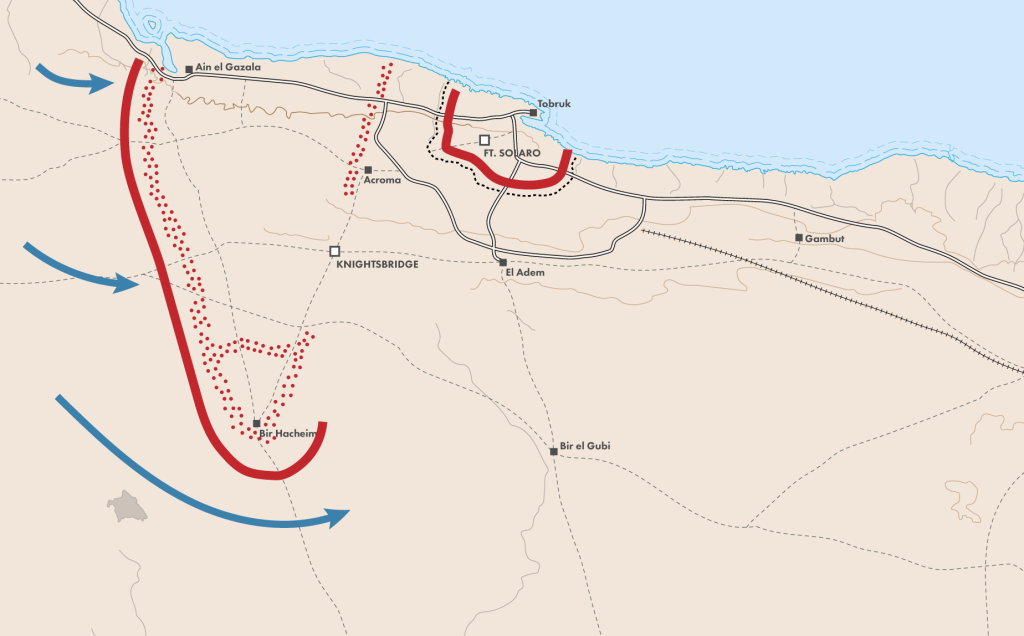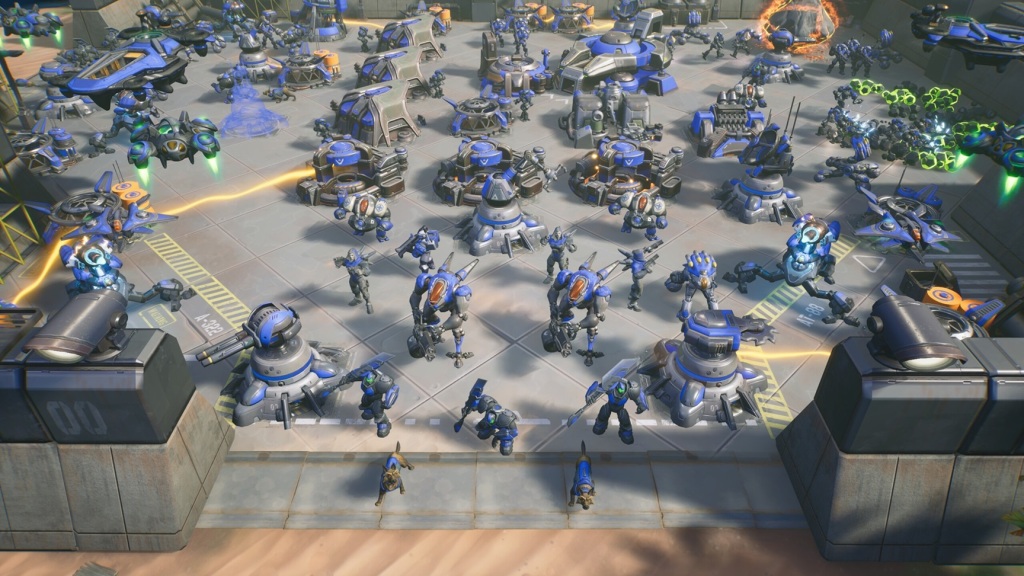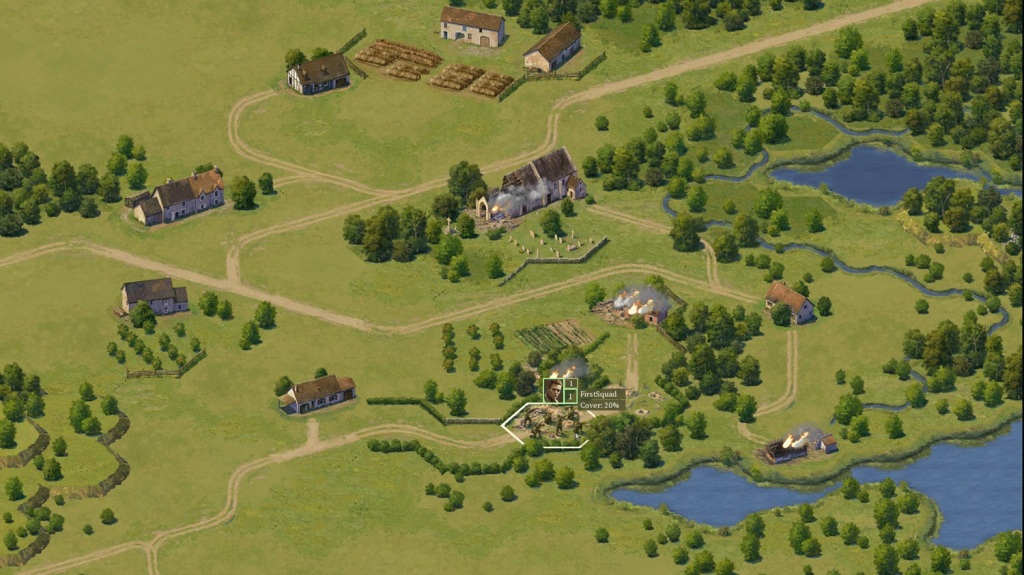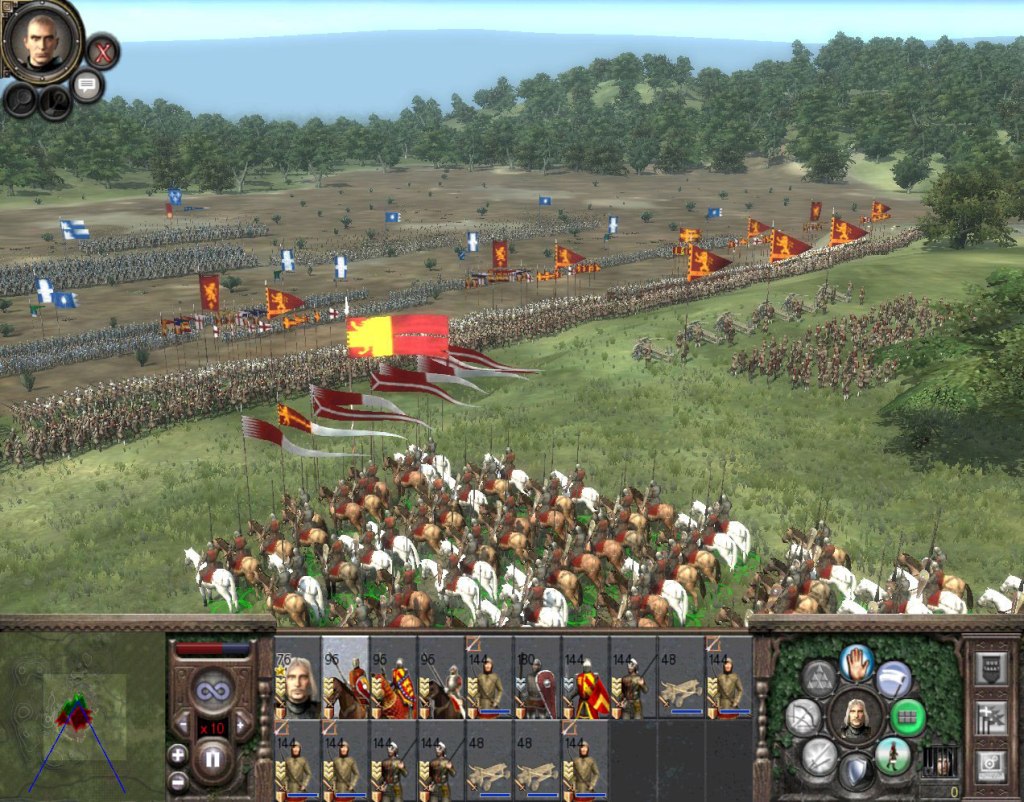Attack at Dawn: North Africa is a promising wargame currently being developed by Panzer Division Games, headed by Tomislav Čipčić. Tomislav was kind enough to let me know a bit more about his first commercial game and how he’s planning on putting his very own, personal spin on the genre by allowing players to play his hex and counter wargame in real-time! “What sorcery is this?” – I hear you ask! – “Dearest reader, please, calm down and have a read at this fantastic interview”- I kindly retort- “Yes, yes. Thanks” – you acknowledge and proceed by reading the entire interview.
So, who’s Tomislav, and what’s your story?
I am a game designer and programmer from Split, Croatia. I am also a husband and a father of two little kids. I have been playing video games since I was 6 years old, starting with the ZX Spectrum. Those were the good old days when it took you time just to load the game from a tape recorder, and then you would watch in awe those pixels on your low-resolution TV set. Ahhh, the sweet sound of a game loading from a tape…
How did you come into contact with wargames and the strategy gaming genre?
Through my ZX Spectrum games. Back then I played a lot, and I loved strategy/war games from the start. I remember having lots of fun playing Tobruk, Napoleon at War, Theatre Europe, Midway… I loved moving those unit counters and listening to those beeps which simulated combat sound effects. Back then we didn’t have a mouse as a controller, so you would do everything using a keyboard and joystick. When I think about it, I don’t know how did we have the patience to move the cursor on the screen with Kempston joystick, or to give textual orders.
What are some of your favorite games?
Oh man, where to start? Why don’t I just tell you the ones that pop in my mind at this moment, to give you at least a fraction of my favorites? And be advised that these are only computer games, as I have a lot of favorite board wargames as well. Here we go:
Sid Meier’s Civilization – A masterpiece! A game that defined a genre, and still stays fresh and entertaining after all these years. I’ve played the fourth game in the series the most, but the first one in the ’90s was a revelation to me. Sid’s career inspired me to take this game designer path.
Sid Meier’s Gettysburg – Watching those soldiers move in real-time on this great battlefield was another revelation. So much so that this game was one of those that inspired me to design Attack at Dawn. Ultimate General redid this system and created a great game in its own right.
Sid Meier’s Pirates – So many hours spent on this one. The idea to narrate a player’s story with a series of smaller games was a winning combination. I still play it from time to time.
Close Combat – Another masterpiece! The combination of a clear top-down view, fast-moving game, and practical UI created a basis for a great series. A lot of ideas for Attack at Dawn came from this beauty. I played 3rd game in the series the most – the one in the Eastern Front. I played it online so much that I even reached some top-tier spots on the leaderboard. And that was 20 years ago when the Internet was not as widespread and fast as it is today.
Panzer General – I’ve skipped many classes because of this one. What can I say that hasn’t been said before about Panzer General? So many games can trace their lineage to this title.
Dune 2000 – The game that started the whole RTS genre. All of the concepts they’ve set in that game are still used today.
Total War – Especially Shogun 2. I’ve always loved Japan’s Sengoku Jidai period, but after this game, I can’t get enough of Kurosawa movies!
Fallout – Great series, so immersive and filled with narrative. I’ve played Fallout New Vegas so much that my carpal tunnel syndrome kicked in.
Red Dead Redemption 2 – The latest of my favorites. The open world with no bounds, in which you choose your destiny. Enormous game, filled with details. And works with no bugs or glitches (on my PC, at least). An incredible achievement and one of the best games ever.
Other than wargames, what other genre or franchises do you enjoy playing?
Strategies in general (real-time and turn-based), air combat simulations, open-world (role-playing) games … Anything deep, layered, immersive, full of life and soul. I try indie titles with innovative mechanics from time to time to see what’s out there. Sadly, since I’ve started designing my own games I don’t have too much time to play the games from others.
Have you worked in any previous wargames before? Or is Attack at Dawn: North Africa your first game?
Oh, I’ve done several games in the past, but this is the first one that will reach the final publishing stage. You know, game development is a very complex business and it takes effort, time, and perseverance to finish these projects. Programming AI (Artificial Intelligence) for strategy games alone is an achievement. Add to it all the work needed for core mechanics, user interface, data storage, and analysis, graphics, sound; not to mention scenario design, balancing, optimization, etc. Most of my projects have started with great enthusiasm and got exhausted after months of clicking on the keyboard. But I’ve approached Attack at Dawn as a serious project from the start. I’ve defined project plans, milestones, and goals, and kept working on them day-in, day-out for more than three years now. And finally, I can see the finish line.
What motivated you to start working on Attack at Dawn: North Africa?
I wanted to make a real-time operational-level wargame. The idea of seeing the units on an operational scale move and the clash was something I haven’t seen before (or not in a satisfactory way at least). And North African theatre seemed the best place to start since the number of troops was limited, and mobile warfare played a very important role.
How would you describe it and how does it intend to differentiate itself from other games in the genre? What is truly unique and sets it apart?
It is a fast, polished and historical strategy game set in WW2 North African theatre. The game controls are streamlined for ease of use and fast learning. The map is large, easy to read and understand – you get a feeling of the situation in a blink of an eye. The game moves fast, units are constantly in motion and the flow of operations is clear and resembles real-life warfare. It’s as if you had a satellite and watched all those historical battles unravel in front of your eyes. What is unique? For me, that would be the combination of clear and clean maps, accessible and streamlined controls, a mix of real-time and we-go mechanics, and solid AI.
The real-time option sounds amazing and from what I’ve seen you play, it’s really manageable. How did you manage to implement that? And why not keep it traditional, turn-based?
Real-time/we-go is the key that sets this game apart from many other titles set in this period and region. There is some beauty and flow that comes out from playing the game simultaneously with your opponent. That increases the adrenaline rush and can lead to interesting twists and turns. For instance – you can be really surprised when an enemy comes at you from an unforeseen direction, something which wouldn’t be easy to accomplish in a classical turn-based wargame (especially in a tabletop world, where there is no Fog of War). That’s what I wanted to do ever since I’ve seen it in Sid Meier’s Gettysburg more than two decades ago.
It was a challenge to implement. I had to keep the controls relatively simple so that the player isn’t too overwhelmed with the number of clicks and switches. Every command had to be logical, necessary, and easy to use. I also had to optimize the game several times since every calculation has to be done in real-time, lightning-fast. And doing extensive AI calculations in real-time was quite some work. But I succeeded.
In fact, I can imagine most hex and counter wargames working great when played in real turn, but I don’t think I’ve ever seen one do this, where did you get your idea from?
My main role models were: Gettysburg, Close Combat, DAK II (board wargame by Dean Essig), and Campaign for North Africa (board wargame by Richard H. Berg). Mechanics from those games are at the core of Attack at Dawn. Combining hexes and real-time/we go was probably the biggest leap in the design, which I cracked after some extensive playtesting. The idea from that came when I thought about how to remove the need for micro-managing the troops. Hexes solved the dilemma.
Correct me if I’m wrong, but Attack at Dawn seems to be able to zoom in and out at will, with counters transforming into separate units. I was wondering, is there a way to command different units within the same counter? Or does the counter need to move in a whole? Because it would allow players to spread out their forces or join them as they wished. Let’s say I want to move half a division into a counter, is that doable?
The counter moves as a whole, at least in this first game in the series (Attack at Dawn: North Africa). These units (counters) are predefined in the game scenarios. For instance – in Brevity the German-Italian frontline is comprised of smaller, company-sized units and kampfgruppen. While in larger scenarios, base units are battalions. There is also a limit to the number of units you can place in a single hex, the Stacking Limit which is 2+1 in this game (2 active + 1 routed unit).
But the expansions to the base game will add more features on a strategic level, like General Staff, Engineers, Intelligence, Commando Ops, Organisation, etc. In the Organisation segment, you will be able to reorganize your units – as the British did when they combined various regiments (battalions) into brigades and divisions. There you will be able to split battalions into smaller companies and create Kampfgruppen or Jock columns. And you will be able to mix and combine units while keeping to some historical limits.
I would like to explore a bit this “real-time” option to play. What took you to “crack it” after the extensive playtesting? What was your eureka moment?
What I haven’t mentioned is that I’ve tried developing a game like this decade and a half ago. Together with a couple of friends, we developed a similar concept and within a period of six years reached a beta (or better say – alpha) stage. And then it all went downhill since we realized how much work needs to be done. Back then the game was real-time but the units moved from pixel to pixel, as you would see in most real-time strategy games (Starcraft, Wargame: Red Dragon, Company of Heroes). The unit in those games can move a tiny bit and that, together with weapon range leads to a lot of micromanagement. If you have units with different weapon ranges, you could micromanage your long-range unit out of the enemy’s range and destroy him.
That doesn’t sound like an operational-level game. That may be used in a tactical-level game, but even then, too much micromanagement is tiresome and is a poor design choice. So what to do? In games like Hearts of Iron, a unit moves sometimes between regions, and that is shown with a progress bar on a unit’s movement arrow. And when the unit enters into an adjacent region containing the enemy unit – then it can fight against the enemy. In tabletop board games, you move your units from hex to hex and when you get to the hex adjacent to the enemy, then you can attack him.
So, I realized I could combine those two. Divide map into hexes, and that way I can avoid the micromanaging of units from pixel to pixel. That would also give me that precise hex grid which will allow me to simplify movement and supply rules. For instance – a unit has a Movement Factor that corresponds to the number of hexes the unit moves in an hour. If a unit has a Movement Factor of 5 – that unit can move 5 hexes per hour over a Clear terrain. That is a clean and good design.
Secondly, units can move in real-time from hex to hex using progress markers. When you send a unit to the adjacent hex, it will take it some time to get there and movement progress will be shown with a movement arrow which fills slowly until it reaches the other hex. When the arrow is “filled”, the unit moves to the adjacent hex and now it can stay there or move further. That is also clean, easy to understand, and marks a good design. So the “eureka” moment was when I realized I can combine those hex mechanics with real-time movement from hex to hex in order to get a better game.
Having the ability to play the game both turn-based and real-time probably had to come with some design limitations, any single one, in particular, you had trouble dealing with other than the fast calculations of the AI?
Real-time imposes a lot of limitations on the speed of calculation. Not just AI, but all world calculations need to be done in a fast manner. For instance – checking supply, visibility of units, calculating movement, combat, and of course the AI calculations. If you aim for a good frame rate, you need to optimize and divide your calculations in a smart way. That’s why the game has a 1-second calculation cycle in which all of the changes to the game world must be finished. And this cycle is further subdivided into about 20 segments, to keep everything nice, smooth, and unnoticeable. Otherwise, the frame rate would drop, and I wanted to avoid that as much as possible. One beneficial factor was that I used sprites for drawing units, instead of 3D models. That way I saved a lot of time for my world and AI calculations.
And can we expect a dynamic or scripted AI?
Dynamic! It took a while to design, but I’ve done it. Basically, you can create your own scenarios from scratch (or based on the existing ones) and you will be able to play them, with no need to design AI scripts. The AI engine has a Plan Generator which generates an offensive or defensive plan (based on the scenario) at the beginning of each scenario. He tries to think like a human and follows the same pattern – decides on the important locations and areas, defines directions of the main attack and supporting forces, deploys groups, and activates reserves when needed.
Each time you begin a new game, the AI creates a new plan and tries something a bit different. For example – in Gazala the Germans/Italians might try to attack in the center, or maybe in the north. And based on the actual development they will then shift their reserves. If the plan fails, AI will recognize it and create a new one, and adapt to the situation. And if everything else fails, the AI will surrender to prevent the scenario from dragging without hope for victory.
Also, the expansions for the base game will affect profoundly the way systems interact with one another, correct? Have you thought about how that might impact the real-time experience?
We plan to add another layer atop of existing game. The existing game will remain basically the same (with tweaks and upgrades as we go down the road), but these additional layers and features will give you more immersion. The first expansion will add a dynamic campaign in which you will be able to create your own destiny from start to finish. In it, you will still have the real-time operational level of the game. But between battles and operations, you will have a turn-based game (with turn lasting a week) in which you will deal with preparation for the next offensive or defensive. Think of this turn-based campaign level as being in the HQ, while real-time operational level as being in the field with the troops and in the battle itself.
And in the end, after North Africa is done, I have a feeling we’re going to see the Eastern Front very soon after, am I right?
We’ll see how the series develops. I would like to upgrade a game with some expansions before moving to the East. I will probably add the Tunisian campaign as an expansion, and then I will decide where to go next. Italy? Western Front? Or maybe Eastern Front?
What is certain is that I see North Africa as merely the beginning of a very big series, where each new game/expansion will increase the depth of the game. I’m looking forward to the player comments, as I know they will help me to see what interesting features might be added to the system.
Thanks a lot, Tomislav. I sincerely hope Attack At Dawn becomes a wargaming success.
Folks, that’s all I have for you this week. With Christmas right around the corner, I’ll be spending the next couple of days finishing up the preparations and I’ll be back with another list, this time it’s going to be about the best medieval games of all time. I’ll also be writing a retrospective about the best games that came out in 2021. If we don’t see each other until, Christmas, I would like to wish every one of you a Merry Christmas. Stay safe, have fun, enjoy.
Follow Strategy and Wargaming Socials
Strategy and Wargaming needs you to follow its socials. Are we the best strategy gaming website around? I would say so. Heck, what other options do you have? The Wargamer? Please.
So why not give us a follow on the cesspool that is Twitter, or join the 1000 other geriatric patients on Facebook? Or subscribe down below? Or maybe do everything? I don’t care, I’m not your grandmother.
If you enjoyed the article, consider buying me a coffee!
I’ve been running Strategy and Wargaming at my own expense since 2017, with only the ad revenue to cover the hosting, with everything else being done by me. So, if you’re an avid reader, you can afford it, and want to support the website, please consider Buying Me a Coffee by clicking this link, for as low as one euro! If you do, just know that you’re helping out a lot and contributing so that Strategy and Wargaming can continue growing!














Leave a comment